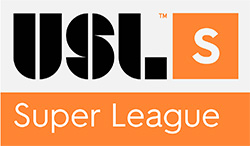 The new women’s USL Super League will launch in August 2023, after the FIFA Women’s World Cup, and align with the women’s international “fall-to-summer” soccer calendar.
The new women’s USL Super League will launch in August 2023, after the FIFA Women’s World Cup, and align with the women’s international “fall-to-summer” soccer calendar.
The Super League calendar puts most of the season–including marquee events such as season openers, playoffs, and the final–during months with typically favorable weather. With both a mid-season winter break and a summer offseason, teams will be able to operate at full strength through most of the year, with fewer absences for national team call-ups and optimized recovery periods for players.
“The Super League calendar is strategically designed to deliver a top-quality fan experience by enabling our clubs to field their first-choice squads as often as possible,” said USL Super League President Amanda Vandervort via press statement. “With key international competitions occurring nearly every summer in women’s soccer, we want to help players effectively balance their club and country commitments.”
Aligning with other top leagues abroad will allow Super League clubs to actively participate in the emerging global women’s transfer market, particularly during the summer transfer window.
“The calendar is constructed with players in mind, from playing conditions to career development to mental and physical well-being,” said Vandervort. “We want to create world-class performance environments that support the players’ needs and facilitate opportunities for players to perform at the elite level.”
Global alignment presents opportunities for preseason friendlies between Super League clubs and their counterparts with similar domestic calendars. Super League clubs can drive awareness and interest during international competitions each summer, and fans can celebrate their club’s players when they compete on the international stage.
There is a risk with this approach: dodging the weather will always be a challenge for northern-clime teams, and it’s an unproved schedule in American soccer.
“The commercial benefits of a fall-to-summer calendar–from ticket sales to player transactions to partnership activation–will help secure the financial footing of our league,” said Vandervort. “We are doing something different because we believe it will set the foundation for a long-term, sustainable enterprise.”
